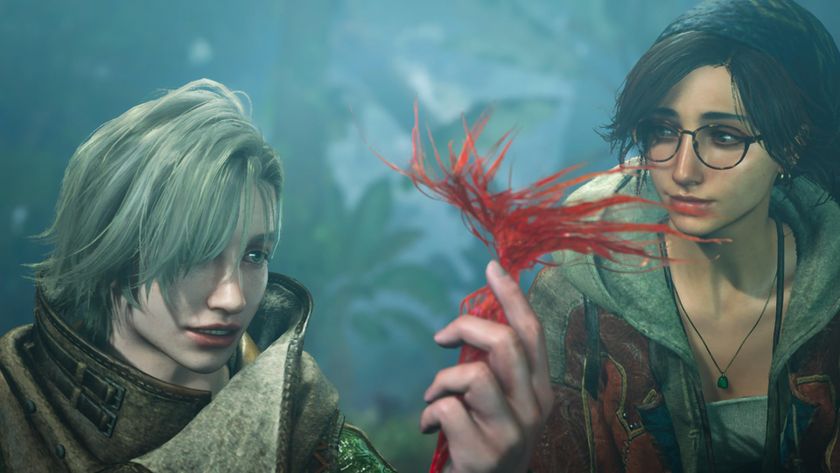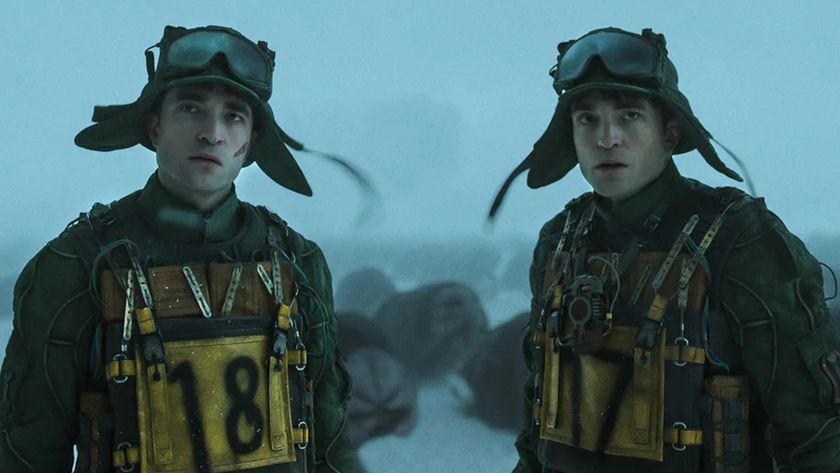Why you can trust 12DOVE
“Money allows you to be who you truly are,” opines Tully (Tobey Maguire), a vile GI-cum-racketeer, in a voiceover that overlays his rough sex with Lena (Cate Blanchett), a desperate housewife-cum-prostitute in post-war Berlin. It’s a statement that prolonged exposure to life in Hollywood would force anyone to agree with, but Steven Soderbergh’s professional values haven’t fluctuated with his bank balance, whether scraping together sex, lies and videotape or busting blocks with Danny Ocean.
So, The Good German arrives on the heels of his mesmerising but little-seen (and as yet unreleased in Britain) Bubble, segueing from a $1.6 million domestic crime drama shot with non-professional actors to a $32 million thriller starring two Oscar-winners and Spider-Man. Not that The Good German is his Big Picture of 2007: it’s ostensibly an experiment with style which Warner Bros has paid for while marking time before Ocean’s Thirteen and half hoping for some Oscar recognition. That thought died with the US reviews, which obsessed on style and dismissed the substance of Soderbergh’s noir throwback.
And the style is readily apparent – the use of black and white, back projection and backlot sets all designed to mimic ’40s cinema, with Soderbergh limiting himself to shooting within the five-lens range of Casablanca director Michael Curtiz and studying script notes from Golden Age-era pictures to see how their makers conquered production problems. In a time where almost anything can be achieved virtually, it could be seen as a perverse experiment. And, if it’s only merit was in supposing what studio noir would have been like without the censorious Hayes Code (explicit swearing, sex and Maguire snarling, “Don’t Jew me on the price”), it would be. But harking back to post-war Hollywood has more substantive benefits: Soderbergh hasn’t transplanted modern ambiguity into a bygone age, he’s brought the desperation and fatalism of that era into ours. The title would have been considered an oxymoron in 1945, but living in the shadow of the Holocaust and Hiroshima and Nagasaki, the creators of film noir – virtually all European émigrés – knew better than any previous generation the universal potential for evil in humanity.
The Good German bears that human stain, with everyone compromised and capable of terrible acts. Only its hero clings to any idealism, the memory of a lost love driving US reporter Jake Geismer (George Clooney) to sift through a Berlin as ruined as The Third Man’s Vienna, like a cross between Holly Martins and Jake Gittes. Geismer is beaten black and blue for his trouble and naivety and, in his own, well-meaning way, is just as blinkered and selfish as everyone else. He’s a chump whose heart trumps his head, but it’s easy to see why he lost it over Lena, with Blanchett channelling Marlene Dietrich in an extraordinary performance, drenched in sadness and desire. Her future may not be all used up, but living with the past involves constant pain. In contrast to her (knowingly) mannered but magnetic turn, Clooney reins it in, playing it with suitably blunt bemusement, but affectingly wounded behind the eyes.
Screenwriter Paul Attanasio – working from Joseph Kanon’s novel – masters the labyrinthine plot and conjures characters as fragile, compromised and believable as he did in Quiz Show and Donnie Brasco, while making explicit the triumph of political expediency over justice in a way the US censor of the ’40s certainly couldn’t have stomached.
It’s this element that brings The Good German startlingly up-to-date, showing how even this ‘successful’ occupation lead to death, exploitation and bitterness. If Chinatown was the ’30s through a smear of ’70s cynicism, this is the ’40s viewed through the haze of Gulf War II.
As the US army attorney (Leland Orser) wades through files documenting the crimes of a nation, it’s hard not to think of everything from Saddam to Guantanamo. As Traffic’s tagline had it: no one gets away clean.
But for all the technique and political relevance, what makes The Good German work is its hard-boiled story. At heart it’s a vicious little noir as bleak as anything from the vintage it’s aping – except it doesn’t feel as much about doomed love or the impossibility of escaping the past as it does about the death of hope. It’s ironic that a man so in love with movies should have made such a troubling picture, posing so many nagging questions. It’s a reason to smile too, that after 17 years and 16 films, the director is still setting himself fresh challenges, risking it all and daring to play. Despite the Oscar and adulation, Soderbergh hasn’t forgotten Orson Welles’ take on making movies: “This is the biggest electric train set a boy ever had!” Here’s looking at you, kid.
Old school style, contemporary resonance and standout turns. This is a bold, invigorating film noir from one of today's most daring directors.
The Total Film team are made up of the finest minds in all of film journalism. They are: Editor Jane Crowther, Deputy Editor Matt Maytum, Reviews Ed Matthew Leyland, News Editor Jordan Farley, and Online Editor Emily Murray. Expect exclusive news, reviews, features, and more from the team behind the smarter movie magazine.

"You are incorrect": John Romero has been correcting Doom history for the past 4 years, and he's not about to stop now

I've played Monster Hunter Wilds for almost 60 hours and somehow missed this game-changing gathering tip

"Give him both": Legendary director thinks Robert Pattinson should win two Oscars for his dual performances in new sci-fi movie Mickey 17










